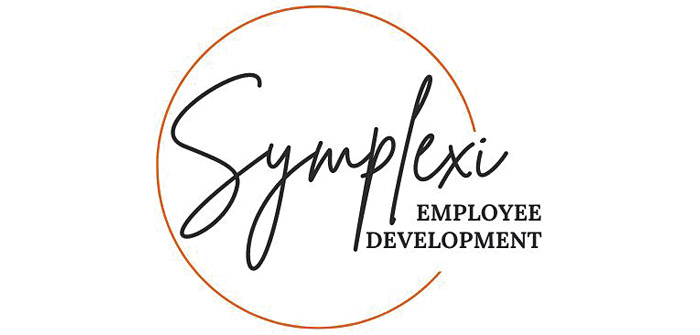In the hustle and bustle of chasing success, businesses often get caught up in a whirlwind of strategies, technologies, and metrics. Yet, amidst all these complexities, it’s crucial to maintain sight of the actual foundation — the employees. They are the heartbeat of any company, and understanding their basic human needs is the cornerstone of building a robust framework that supports their mental resilience and professional development. We’re all human, and these shared needs form our commonality.
Let’s Talk About Our Common Humanity
Before diving into the nitty-gritty of fostering mental resilience and professional growth, let’s pause and acknowledge that we’re all humans with universal needs at the core. Regardless of job titles or roles, our fundamental needs remain constant. By recognizing and tending to these needs, businesses can create an environment where employees can not only survive but truly thrive, leading to higher productivity, higher job satisfaction, and a positive workplace culture.
The Need for Connection
We humans are wired to connect and belong. This translates into the need for a supportive and collaborative environment in the workplace. Encouraging teamwork, open communication, and inclusivity nurtures strong interpersonal relationships, improving the workplace.
The Need for Autonomy
Everyone craves a sense of control over their work and life. Granting employees autonomy within their roles enhances motivation and instills a sense of responsibility and ownership, leading to more empowered and engaged teams.
The Need for Growth
Personal and professional growth is an innate desire for us all. Organizations can support this by providing opportunities for skill development, career progression, and continuous learning.
Setting achievable goals and offering pathways to reach them are vital steps in fulfilling this need.
The Need for Purpose
Finding meaning and purpose in what we do is a fundamental human aspiration. Articulating the company’s mission and showcasing how each employee contributes is vital.
Let’s Build Resilience
Mental resilience is a critical aspect of employee well-being. It empowers individuals to bounce back from challenges, adapt to change, and maintain a positive outlook. Here are some strategies to help employees build and maintain mental resilience in their day-to-day work lives.
Encouraging Self-Care
Promote self-care practices such as mindfulness, regular exercise, and a healthy diet. Provide resources and support for managing stress and finding a work-life balance. Remember, a healthy body and mind are the foundation of resilience.
Creating a Supportive Work Environment
Fostering a culture where employees feel safe discussing their mental health is crucial. Offering access to services like coaching or counseling and employee assistance programs is a tangible way to support them. Open dialogues about stressors and challenges should be encouraged.
Emphasizing a Growth Mindset
Promote a growth mindset within your organization. Encourage employees to view challenges as opportunities for growth and celebrate failures as valuable learning experiences. This approach fosters a sense of resilience and innovation.
Let’s Foster Professional Growth
Professional development is intertwined with personal well-being. Here are ways to support your employees’ professional development while recognizing and addressing their fundamental human needs.
Tailoring Development Plans
Collaborate with employees to create personalized development plans that align with their career goals. Acknowledge that each individual’s journey may be unique, and tailor development opportunities accordingly. This customized approach demonstrates the organization’s commitment to the employees’ growth.
Encouraging Mentorship and Coaching
Establish mentorship and coaching programs within your organization. Pair employees with experienced mentors who can guide them in their professional journeys. These relationships offer valuable career insights and provide a sense of connection and purpose.
Cultivating a Culture of Continuous Learning
Encourage a culture of continuous learning within your organization. Invest in training and online courses to help employees acquire new skills and knowledge. Ensure these opportunities are accessible to all, promoting a culture of growth and development.
Recognizing Contributions and Providing Feedback
Regularly recognize and provide feedback on employees’ contributions. Acknowledge their achievements and offer constructive guidance for improvement. This supports their growth and fulfills their need for connection and purpose, reinforcing their value within the organization.
In conclusion, businesses that recognize and embrace our shared humanity by acknowledging and addressing fundamental human needs are more likely to establish a solid foundation that supports employee mental resilience and professional development. Remember, we are all human. By nurturing these needs, you can create a workplace where your employees don’t just survive but thrive, leading to tremendous success and fulfillment for individuals and the organization. It’s a journey towards a more positive workplace where everyone can realize their full potential, increasing their productivity, job satisfaction, and providing a flourishing, dynamic culture. I think it’s a journey worth taking.
Abby Gorman, the owner and founder of Symplexi Employee Development, started her career over two decades ago in the Newspaper industry where she dedicated herself to cultivating and nurturing robust teams. Throughout her professional journey, Abby recognized the immense value of empowering individuals to reach their full potential. Driven by her unwavering commitment to personal and professional growth, she embarked on her own transformative path, becoming a certified life, development, and trauma-informed coach. With a wealth of life and business experience, Abby has merged her expertise and collaborates with companies to grow and empower their teams.





